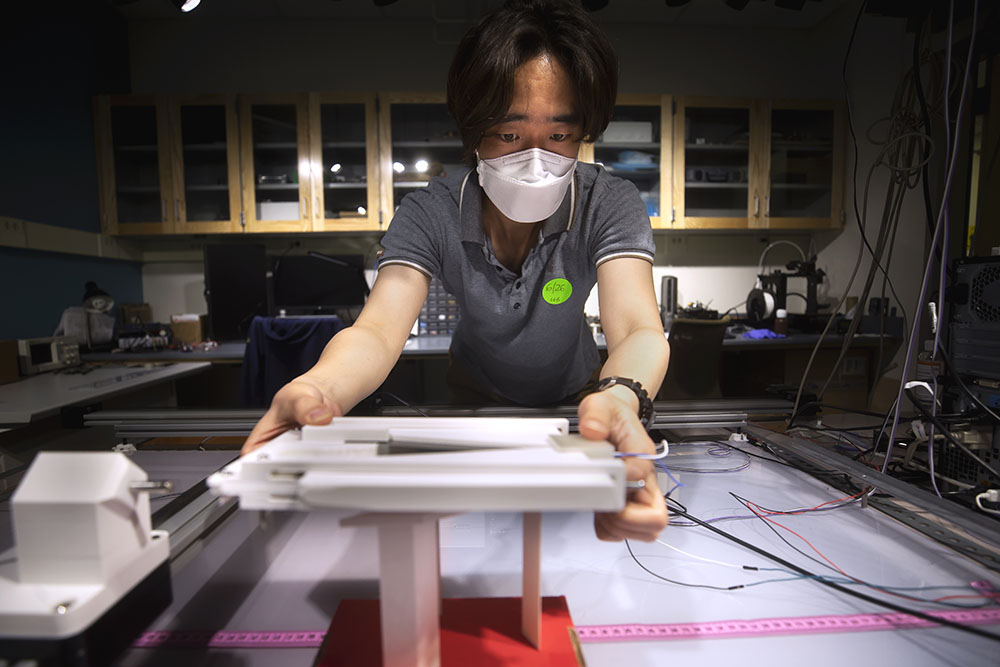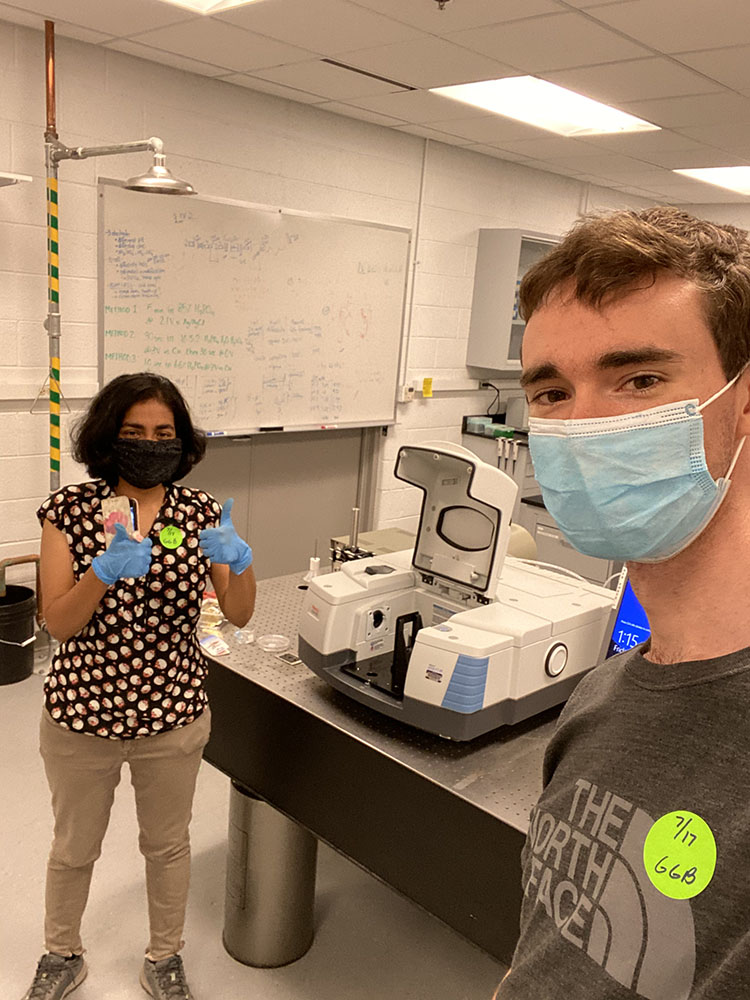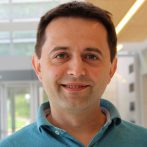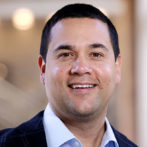A few months ago, the COVID-19 pandemic forced the world to change in ways we never have thought possible, and that included the shut down of our research labs. Research labs are the heart of our mechanical engineering work, they are where major breakthroughs happen, and where solutions to big world problems begin.
As we head closer to a new semester it is time to start a “new normal” and find ways to continue important research in a safe and responsible manner. The Mechanical Engineering department (ME) is happy to be participating in the University of Michigan’s (U-M) research ramp-up process and found out what our faculty and students are now doing to safely re-enter their labs.

Associate Professor, Neil Dasgupta, is back in his lab which focuses on the area of sustainable energy, manufacturing, and nanotechnology. They have projects ranging from advanced batteries for electric vehicles, solar fuels, and bio-inspired materials. While the shut down caused much of their research to stop, they still found ways to move their work forward.
“We spent quite a bit of time working on modeling during the ramp down, which was a shift for us as experimentalists. However, this time away from the lab was actually quite productive, and opened our eyes to new computational tools, as well as providing space for theoretical discussions, “ said Dasgupta.
Dasgupta’s lab is running at about 30% compared to pre-COVID research work and requires a good amount of flexibility and planning among the members now working in it.
Adrian Sanchez, a PhD student in Dasgupta’s lab said, “As a group, we developed several practices to protect the health of all our members. We frequently disinfect our work areas and common surfaces. The lab has been divided into “zones” where the maximum occupancy of each zone is one person. When I want to work in one of these zones, I schedule my time on our group calendar. This helps maintain social distancing.”

Some researchers are looking at the silver linings this has provided them. For example, Assistant Professor Bogdan Popa’s lab works with ultrasonic waves to improve sensors for not only autonomous vehicles but also for sonar and other imaging applications.
Hyung-Suk Kwon, a PhD student in Popa’s lab said, “Having less people in the lab is a good thing for acoustics, less people means less movement that could potentially give inaccurate readings.”
Popa also commented, “Covid-19 poses significant challenges but, on the positive side, I do like the fact that tools always are returned to their proper spots and the lab stays more organized between the scheduled lab groups.”
U-M ME is following campus-wide and state protocols which limit that amount of people in building spaces, require the use of a mask, and enforce proper social distancing measures.
“Things are still very different as compared to how we used to operate pre-COVID19,” said Assistant Professor Rohini Bala Chandran, whose lab researches radiative heat transfer, chemical kinetics of heterogeneous reactions, and harnessing sunlight to stimulate resource recovery from wastewater contaminants to name a few.
Mike Mayer, a PhD student in Chandran’s lab, explains, “Before entering the G.G. Brown building, we are always required to answer a questionnaire, have our temperature taken, and receive a sticker that certifies that we are all clear of potential COVID-19 symptoms. Once in the building, masks are required at all times. In the lab, we make sure to wear gloves and sanitize any surfaces we interact with before and after use. If we encounter a situation in which more than one person is in the lab simultaneously, we follow strict distancing guidelines and maintain at least 6ft of distance. When we are ready to leave the lab, we make sure to “swipe” our M-Cards in case there is a need for contact tracing later on.”
“It has been somewhat challenging to not be able to interact outside of my computer screens with these students. I think all of us miss the comradeship of team members being ‘in-person’ in the offices to seek help and/or stimulate any spontaneous discussions,” said Bala Chandran.

The key throughout this process has been the continued effort in finding ways to work together, keep building connected working partnerships, and helping one another. “I try to help my colleagues outside of the lab, so they can stay healthy. For example, I gave some of my disinfectant products to another lab member since he was running out, and disinfectants are almost impossible to find now. It’s important that we all support one another during these times,” said Sanchez.
Mayer explains,”Our lab group no longer meets in person which can make discussions of complex ideas even more challenging. The group would also meet for the occasional social outing, so we have tried to maintain this activity through video conferencing lunches.”
As the research ramp-up continues we applaud our U-M ME community for sticking to the protocols in place that allow us all to stay safe while continuing to remain flexible in our work progress.
“It feels great to be back, but it is also hard to not be able to fully return. We are grateful for the space and access that we do have, and realize that this is a privilege that needs to be respected and treated with careful attention to detail. We are also very thankful for our research sponsors for their patience and understanding as we operate at limited capacity, and are excited to continue to produce critical results and new discoveries to make an impact on society.” said Dasgupta.


